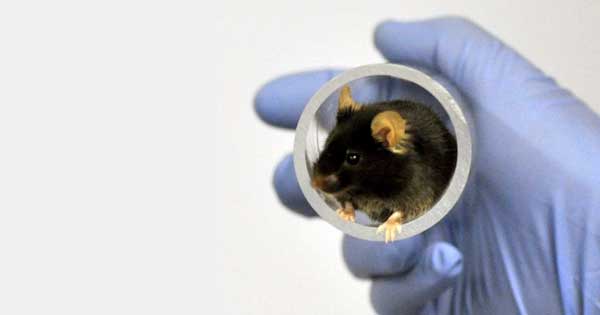
When I found a perfectly preserved mouse skeleton beneath the refrigerator (which had been removed for repairs) I wasn’t sure whether to feel relieved, disgusted, or fascinated by the tiny vertebrae extending all the way from its skull to the tip of its tail. At the time I was living in a downtown Manhattan walk-up apartment, a few floors above a pet shop, and mice were our near-constant companions. I’d like to say that I respected their basic right to nest in the walls of our slightly decrepit, tilting building, but every time I saw one of the critters darting across the floor of our kitchen, I shrieked with fright in the most delicate Victorian manner.
The truth is that mice are much more terrified of humans than we are of them: mice are prey animals, ever aware of the danger of being chased and caught by a predator. Unfortunately, the traditional way of handling lab mice—picking them up by the base of the tail, to avoid being bitten—appears to stimulate the same panic mice feel when being chased from behind. So scared are they that lab mice will often urinate or defecate when dangled by the tail. Such anxiety often leads them to avoid their handlers and behave with greater trepidation in situations that are quite safe.
So I was pleased to read about Jane Hurst, a behavioral biologist at the University of Liverpool, who is designing gentler ways of handling lab mice. Hurst found that mice allowed to walk into a clear plastic tunnel—which the handler then lifts, without direct contact with the animal—experience much less anxiety than mice grabbed by the tail. They spend more time interacting with their handler: sniffing, crawling, and peeking inside the tunnel. And they are more likely to enter the open-ended arm of a maze, a standard test of anxiety in lab mice. The decrease in anxiety occurs if they are picked up in a tunnel that is always present in their cage or in a newly introduced tunnel. (Overall, though, they prefer a familiar tunnel.)
Long-term, recurrent anxiety in mice can have profound effects on experiments designed to test drugs, say, intended for treating anxiety and depression in humans. “If experiments require animals to be anxious (for example, tests of anti-anxiety drugs where we need to see if these reduce anxiety), there could be an advantage in deliberately using tail handling to stimulate background anxiety in the test animals,” Hurst says. But in other areas of research—especially behavioral studies—anxiety in lab mice may compromise results, either because the animal may not show an expected response, or because high anxiety may amplify their reactions.
I realize that most people don’t spend much time worrying about the welfare of lab mice. But I do think that all caged animals deserve to be treated decently—especially those that spend their short lives in the service of humans.

